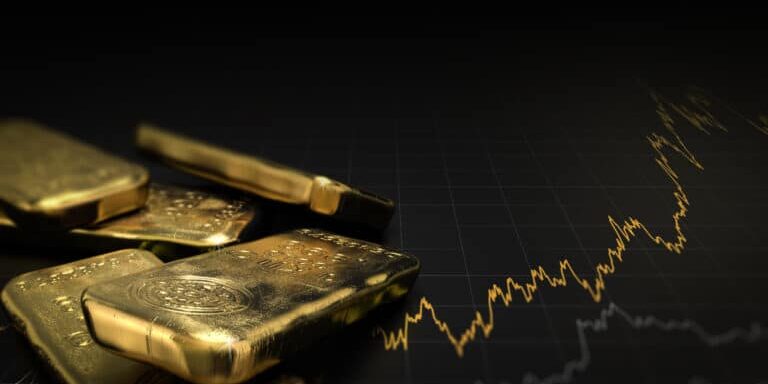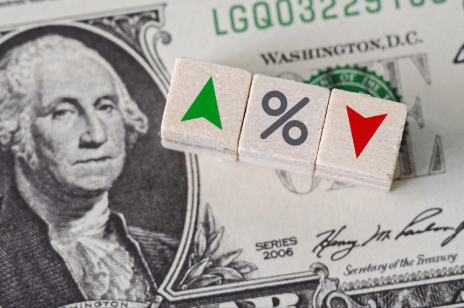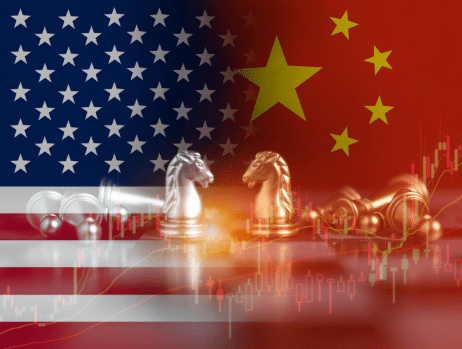
10 Factors That Impact The Price Of Gold
Among the notable characteristics of gold is its dual function: the precious metal is a scarce commodity as well as an investment. The development of gold demand and thus the price of gold depends on a considerably higher number of factors than stocks. Although the price of gold development in recent years has been predominantly positive it is therefore also subject to frequent fluctuations.
Major influences on the price of gold can be subdivided into long-term, medium-term, and short-term factors when looking to buy gold. Among the more long-term influences is economic growth, both within individual countries as well as globally. By contrast, geopolitical crises and massive strategic gold buying or selling activity by major futures markets investors such as India will only have a short-term influence on the gold price.
1. Gold Demand Increases Due To Prosperity
The long-term price of gold development is heavily dependent upon that of a country or region’s wealth and economic growth. This is because economic boom phases affect gold demand, i.e demand for coins, bullion of gold-backed securities, favorably. Gold is acquired in larger quantities only above a certain income level and is true both for gold as an investment as well as for precious gold jewelry. Luxury goods are bought only by those who can afford them, as evident in the development of private demand for gold in China and India, which has seen an exponential rise in recent years.
2. Central Banks
According to the World Gold Council central banks and gold ETFs across the world have continuously expanded their gold holdings in recent years, thus supporting the price of gold. Around 34, 789 tonnes of gold are now stored in central banks vaults, 10, 776 tonnes of which are held by Eurozone central banks alone (including the ECB) where gold accounts for 59 percent of total currency reserves. Any change in this long-term strategy among central banks could result in gold sales flooding the market, which would have a dampening effect on the price of the precious metal.
3. Industrial Applications
While roughly half of the physical gold sold worldwide is in the form of jewelry, there are many other industrial applications for the precious metal. According to a study conducted at the Chalmers University of Technology in Gothenburg, Sweden, cars across Europe contain some 440 tonnes of gold in automobile components. The chemical industry heavily relies on gold as a catalyst and it is growing increasingly important in the medical field. As a vital component of rapid tests for the detection of several diseases such as malaria, it is currently also used in most COVID-19 detection tests. Gold is also employed to treat joint diseases such as rheumatism.
Moreover, due to its extreme ductility and conductivity, the precious metal is an indispensable component of many mobile applications such as smartphones and smart wearables. This is an area where strong growth rates are expected in the future - a development likely to support the price of gold.
The long-term price of gold development is not only controlled by demand but increasingly by a desire for it in India and China. Gold is a rare commodity that is expensive to mine and therefore a precious metal. No significant new gold deposits have been discovered worldwide since 2012 and according to the financial information service provider SNL today’s known production opportunities could be exhausted within twelve years if the sustained high global demand for gold continues. For the past ten years, it has stood at above 4,000 tonnes a year.
According to a study by precious metals, consultancy Metals Focus the mining per troy ounce of gold in an existing gold mine amounts to the price of gold of US dollar 1,150. The price tag is far higher if a mining company has to develop previously unused gold deposits and build new production facilities which can take up to 15 years and the so-called incentive price per troy ounce is then the price of gold of US dollar 1,500. For mining companies, the development of new gold deposits is simply not worth their while if the gold price falls below this threshold. The total amount of mined gold is therefore important for the price development of the precious metal.
Major gold producers’ annual balance sheets, published in the Investor Relations section of their respective websites, provide production quantity information as well as facts about gold recycling activities, a topic increasingly relevant among gold producers. According to the trade journal “EU-Recycling and Environmental Technology”, 30 percent of global demand is already met through recycled gold.
4. High Inflation
History has shown time and again that in times of high inflation rates such as the 1970s in the US dollar the price of gold tends to see a sharp increase. As part of the annual 2018 survey conducted among central banks which examined motivational factors in the expansion of their gold holdings 55 percent cited the function of the precious metal as a protection against inflation. However, the global gold price is likely to benefit little when inflation rates are more moderate, and when inflation-indexed government bonds are an attractive interest-bearing alternative.
5. Interest Rates
Gold has always been considered the hardest currency in the world. The precious metal is not subject to age or decay and contrary to several securities it does not bear any default risk. It does however share another characteristic with currencies: it does not offer any return by way of interest of dividends. Its value increases only through its price. The price of gold is at a disadvantage compared with shares, bonds, and other securities as well as investment products such as money market accounts or saving plans. The price of gold is sensitive to interest rates movements that are generally triggered by medium-term changes in individual countries’ key interest rates, i.e. by the ECB within the Eurozone.
If real interest rates (interest rates adjusted for inflation) rise the impact on the price of gold can be negative as other investment opportunities become more attractive and affect gold prices. The price of gold benefits from low-interest rates that are now common across several countries. For years both the US and the Eurozone have been pursuing a strict low or zero interest rates policy.
Interest rates movements do not always impact the price of gold in the same way. As the World Gold Council has found in a US study it the direction that matters. While in terms of negative US real interest rates the gold price per troy ounce tended to develop twice as well as the long-term average. It remained positive alongside positive real interest rates up to a level of 2.5 percent. Only when real interest rates rose above this level did the gold price weaken.
6. US Dollar Most Influential Currency
Like most commodities gold is traded on the world market mainly against the US dollar in terms of volume. Both the US dollar and gold are sought after foreign currency reserves for central banks around the world. It is no coincidence that the US Federal Reserve has the by far largest gold reserves and in the days of the gold standard, the price of gold and the US currency was linked. Today the US dollar and the price of gold give reciprocal short-term impulses.
A strong dollar tends to weaken the gold price while a strong gold price usually has a dampening effect on the US dollar. A weak dollar can in turn cause the price of gold to rise. However, this does not apply in both directions to the same extent, as evident in an analysis by the World Gold Council which is based on the long-term evaluation of monthly gold data from January 1971 to March 2018. In times of a weak US dollar, the price of gold bullion tends to rise twice as strong as it recedes against a rising dollar.
This asymmetrical relationship is also apparent in the price of the precious metal concerning other currencies. During the European financial crisis the price of tonnes of gold, the yellow metal, was strikingly similar to that of the euro. Many professional investors, therefore, use the price of gold to hedge against possible weakness in the exchange rate of the US dollar, euro, and other currencies.
7. Stock Market Developments
Stock indices such as the DAX or the EURO STOXX 50 reflect the economic performance of a country or region. In times of economic highs, indices are up and during economic crises, they drop. These developments are usually medium-term and may drive the price of gold but not necessarily. Although flourishing companies’ stocks tend to offer attractive alternatives to gold investments a boom also entails a growth in prosperity that as mentioned above is often echoed in a rising demand for gold. Concerns about future crises not yet reflected in the performance of a stock index can also lead to increasing gold investments despite the boom. From the end of 2018 to the beginning of 2020 this occurred in both the Eurozone and the US when gold saw a rally to buy gold bullion despite highs in stock indices.
8. Geopolitical Uncertainties
In our globalized society crises are hardly ever limited to one particular region with no impact on the rest of the world. Both the smoldering US and China trade conflict and Brexit are prime examples of inverse relationships as both have had a lasting impact on the price of gold and investment demand. Regionally limited threats or wars can cause investors around the world to seek refuge in safe-haven investments as was the case in 1980 when the price of gold reached a new record high following the Soviet Union’s invasion of Afghanistan. One country that continues to be a safe haven for gold and invests heavily in physical gold is India.
9. Major Gold Investors
A look at swarm intelligence or investment professionals’ activities can both help assess the gold price’s potential development. That is where inventory data of the so-called gold ETC comes in. An ETC is an exchange-traded commodity fund open to investor participation. Since the units are usually certificates or debentures that would not protect investors from total loss in the event of the fund issuer’s insolvency a number of the funds are physically backed with the commodity. For every unit sold in a gold ETC a corresponding amount of real gold is deposited that can mean large quantities of gold coming together. Gold ETC inventory changes published daily by news agencies such as Reuters or Bloomberg provide insight into the current demand situation for gold and all investors to identify trends.
10. A Difficult Forecast
If it were possible to observe the gold price under laboratory conditions in combination with just one of the influencing factors mentioned above a reasonable reliable development forecast might be possible. The reality of the situation is much more complex. Long and medium-term factors interact and their effect can be weakened or even leveled out suddenly by unforeseen occurrences. Events that have nothing to do with the gold market may exert great influence. As seen most recently when the COVID pandemic escalated into a global crisis. As expected we saw significant slumps across the stock markets while the safe-haven gold gained significant value. The following price decline came as suddenly as it was unexpected.
In all experiences, the simultaneous base rate cut in the US should have served as an additional stimulus for gold production. So what happened? Have commodity experts and analysts across the globe been getting it wrong all these years? They have not. The most recent developments were due to major investors’ liquidations of extensive gold holdings on the futures market to meet their payment obligations resulting from stock market losses.
We have seen that the individual factors influencing the gold price should all be taken into account and evaluated within the context of developments in other markets. Only by taking in this greater picture can we arrive at a certain idea of where the precious metal might be headed soon. And, as is true for all types of investment, there is no such thing as a reliable forecast.

Gold has long been a safe haven for investors due to its limited supply.
Conclusion:
Gold has been one of the most traditional forms of investment by studying the exchange rate or how to sell gold. Before we knew about fixed deposits or stock markets or mutual funds buying gold was one of the preferred ways of investing. In India, perhaps the largest consumers of gold, for example, gold has always had relevance since through gold purchases it was used during weddings and festivals as a sign of opulence and has an important role. Its growth is massive in China. Over the years, investing in the gold rate had evolved as an ideal hedge for volatile markets primarily due to the scarcity of precious metal.
Demand from ETFs and central banks is another factor that affects gold prices and investment options. For too long the central bank was the largest holder of gold reserves. Not any longer! Gold as an alternative currency is an argument that has gained traction in the last few years. Since the sub-prime crisis in 2008 most central banks across the world have been printing currency in a big way. This has substantially eroded the intrinsic value of these currencies. There is an argument that central banks and ETFs may prefer to hold reserves in gold rather than foreign currencies. That is because gold has limited supply.
Hence, unlike fiat currencies, the supply cannot be increased indiscriminately and that will ensure that the value will be preserved. Over the last 50 years, two clear fundamental trends have emerged concerning gold prices. Firstly, gold bullion has always gained value in terms of uncertainty. Secondly, the gold price has always been inversely related to the strength of the US economy. Barring these two factors, others have been technical factors that have impacted gold prices more in the short to medium term.
Central bank monetary policy has had a strong impact on gold prices. We are of course talking about the major central banks like the US Fed, the ECB, and the Bank of Japan. When you invest in gold you are foregoing the interest that you would have earned on buying a debt instrument. But if the rates go very low then the opportunity cost is almost non-existent and will lead to a spurt in the demand for gold and a safe haven for gold purchases. Gold prices went up sharply in the aftermath of the sub-prime crisis in 2008 to touch a level of US 1900/oz in 2011 when the Fed and other central banks were holding on to near-zero interest rates. However, post-2013 as the Fed has indicated at a hawkish monetary policy the price of gold has retreated to lower levels.
The first and foremost factor that pushes up the price of gold is global uncertainty. Here we are referring to political and geopolitical uncertainty. Let us go back to the biggest Bull Run in gold between 1971 and 1980. The period began with the crumbling of the Bretton Woods formula. Later in 1973, there was the Arab-Israeli war. Unhappy with the US support to Israel, Saudi Arabia imposed an embargo on exports of oil to the US that almost brought the world to the brink of war. Then through the mid-70s, Iran was unstable and it eventually culminated in the ill-fated Iran-Iraq war which dragged on for over 9 years. Finally, in later 1979, Russia (then USSR) invaded Afghanistan making South Asia the new theatre of the Cold War. The intensity of the Cold War and the troubles in the Middle East and West Asia resulted in one of the largest rallies in gold prices. Even today, political and geopolitical uncertainty remains the biggest factor driving the price of gold and gold demand.
The financial market is crumbling and EVERYONE will be affected. Only those who know what's going on and PREPARE will survive... dare we say thrive. Our 7 Simple Action Items to Protect Your Bank Account will give you the tools you need to make informed decisions to protect yourself and the ones you love.









